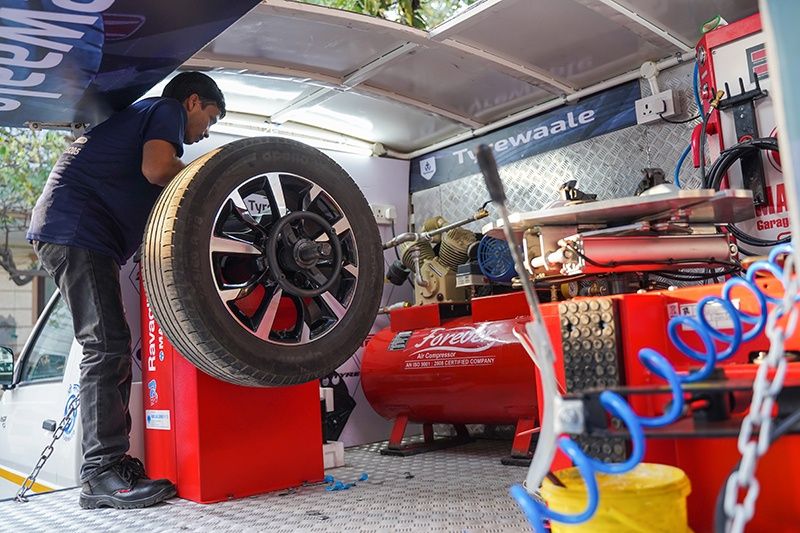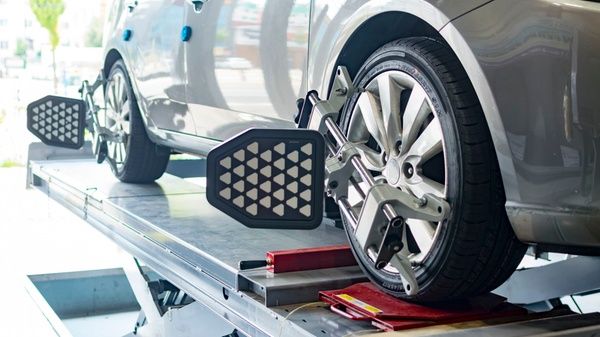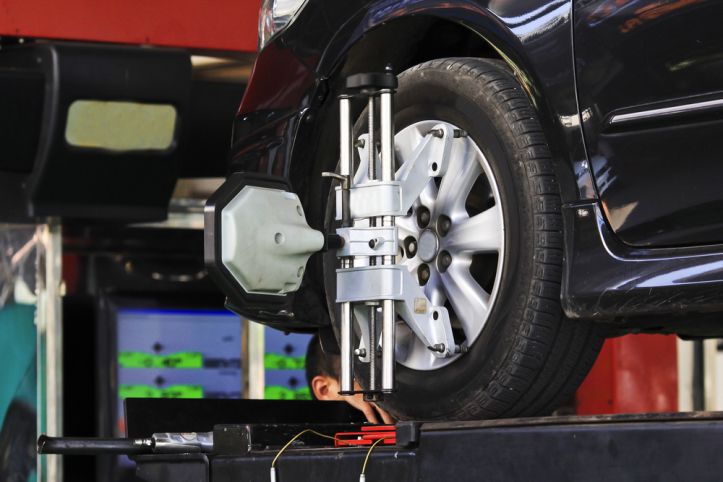Lots of drivers come into the repair shop to ask for a wheel alignment while they mean to ask for a wheel balancing and vice versa. Drivers are often uncertain about the difference between wheel alignment and balancing and think that they are the same, but these are two separate conditions that require different solutions. If you have the same concern, let us help you understand the difference and how each process works.
Contents
Wheel Alignment And Balancing: What Are The Differences?
You’ve probably noticed at times, driving down the road, you’re gonna have vibration coming through your car. That’s called “wheel balance” but sometimes you mix up with “wheel alignment” which is a different process. So wheel balancing what does it mean?
What is wheel balancing?

Wheel assembly consists of a tire and rim. A wheel is considered to be in balance when the weight of the tire and rim is evenly distributed around the axle. However, the tire manufacturing process may not ensure this balance is perfect. Especially, frequently driving on bad terrain will cause wheel and tire-induced vibration causing an unstable and unsafe driving feeling.
Therefore, the wheel balancing process was developed to handle this problem. Balancing is done by adding a portion of the weight to the wheels to distribute the wheel weight evenly in all directions. This method will minimize steering wheel vibrations that affect the driver’s vehicle steering. Wheel balancing is such an important part of your tire’s life because wheels and tires, after being balanced, will have higher durability (wear evenly in all positions; do not rotate; do not affect other details such as bearings, wheel axles, steering wheel).
>> Related post: Tire Balancing: Why You Should Get Your Tires Balanced
What is wheel alignment?

Now, let’s find out the alignment process. Wheel alignment is adjusting wheels on the axles to the exact specifications of their particular manufacturer because wheels can be misaligned at any time from a range of factors like accidents, poor road conditions, and improper driving habits. Technicians use specialized equipment to measure and adjust three main angles: camber, toe, and caster:
- Camber is a measure of the tire’s centreline relative to the road surface. It’s measured in degrees and has a great influence on the driving dynamics.
- Caster is the angular displacement of the steering axis from the verticle axis of the wheel, viewed from the side.
- The toe is the direction in which the tires are pointed, relative to the vehicle centreline, viewed from above.
Wheel alignment is essential to maintain the performance and safe operation of your vehicle. Factors such as fuel efficiency, tire wear, handling, and maneuverability are all affected by the wheel alignment.
From these definitions, we can see that wheel alignment and balancing are completely separate processes. Wheel alignment is all about the angles of your wheels, ensuring they roll straight and make proper contact with the road while balancing focuses on the weight distribution within the wheel assembly, preventing wobbles and vibrations. Mostly, wheel balancing and alignment will be performed at the same time when you go for maintenance, but you should not confuse them as the same thing!
How Do I Know If I Need An Alignment Or Balance?
Wheel balancing and wheel alignment are two of many extremely important maintenance activities that help you have a better driving experience, as well as increase the life of your car. However, deciding whether you need a wheel alignment or balancing can be tricky because some signs overlap. Don’t worry, the breakdown below will help to clear out your concern.
When do you need a wheel alignment?
When your vehicle is out of alignment, three basic problems may occur:
- Irregular tire wear
- Handling problems
- A crooked steering wheel
The most obvious sign of misalignment is the car pulling to one side when you take your hands off the steering wheel. Ignoring signs of pulling will also cause uneven tire wear. Even if the steering wheel is front and center and shows no signs of pulling, poor alignment can cause the tires to wear quickly or unevenly. Make it a habit to visually inspect your car’s tires at least once a week or before starting a long trip. Catching the signs of tire wear early will save you money in the long run.
Vibration from the wheels or steering wheel is another sign that your alignment needs attention, whether it’s mild or severe. Finally, check the wheel alignment if the steering wheel feels too loose or if the response is somewhat inaccurate.
It is recommended to get your wheels aligned every 5000 to 10000 miles If you have a passenger car or truck. A regular wheel alignment will contribute to the smooth operation of your car and maximize driving comfort, help save fuel, and prolong the life of your tires.
Watch more:
https://www.youtube.com/watch?v=MFw_BRk9gjM
>> Read more: Main Causes of Steering Wheel Makes Noise When Turning
When do you need a wheel balancing?
When you’re heading down the highway and your steering wheel is vibrating all the time (not considering when your car is braking). That’s gonna be generally a balancing issue. Here are the obvious symptoms:
- Excessive vibration: When your wheels are out of balance, vibrations are most frequently felt. Although we know that vibrations are normal while driving on roads with uneven surfaces, when driving at high speeds with unbalanced tires, the vibration also gets worse and the vehicle’s steering may become difficult due to these vibrations.
- Higher road noise: Some vehicles are infamous for their road noise, while others keep dead silent. However, all types of vehicles will experience excessive noise If the wheels are not balanced.
- Increase fuel consumption: Your engine has to work a little harder to keep everything moving which reduces fuel efficiency
- Faster tire wear: The typical tire lifespan is 3 to 6 years so there will be excessive wear If the wheels are not balanced.
If you’re experiencing any of these symptoms, it’s recommended to get your wheels balanced as soon as possible. Balancing is a relatively inexpensive service that can improve your ride quality, extend tire life, and reduce wear on your suspension components.
Now, you might distinguish between these processes. Don’t use these terms interchangeably to ensure the long-term health of your vehicle.



